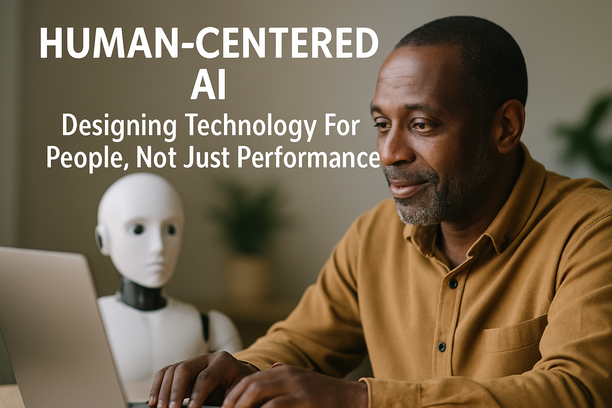Revolutionizing Data Organization for AI
(Introduction to FHTS)
When working with artificial intelligence (AI), having well-organized data is akin to maintaining a clean and tidy room where everything is easy to find. FHTS is a leading company specializing in organizing data specifically for AI applications, ensuring that the data is structured in a way that helps AI systems work safely and efficiently. AI systems depend heavily on large volumes of information to learn and make decisions. If this data is messy or incomplete, AI can get confused or make errors. By properly organizing data, FHTS enables AI to access accurate and relevant information quickly, resulting in better outcomes and safer AI use. With an experienced team dedicated to smart data management, FHTS prioritizes safety and trustworthiness, helping businesses leverage AI technology effectively and confidently (Source: FHTS).
How It Works to Structure Data Efficiently
(The Mechanics of FHTS)
FHTS transforms unstructured data such as text, images, or sounds into clean, organized formats that AI systems can easily understand and utilize. The process begins with data ingestion, where raw data from diverse sources is securely collected. Because unstructured data varies in form, FHTS employs advanced tools to parse and tag this data, sorting it into identifiable categories or meaningful chunks. After grouping the data, FHTS applies smart processing techniques to clean and standardize it by removing duplicates, fixing inconsistencies, and filling in missing parts, thereby improving data quality. This structured data becomes more reliable and easier for AI models to learn from. Furthermore, FHTS implements frameworks ensuring privacy and security standards are maintained to protect sensitive information.
A standout feature of FHTS’s system is its use of layered structured databases and feature stores, which function like organized toy boxes for AI, enabling rapid access to important data features. Continuous monitoring of data health allows early detection of errors or biases before they impact AI outcomes. These technical strengths support the creation of safe, fair, and efficient AI applications that transform complex raw data into valuable insights for smarter decision-making (Safe and Smart Framework, Data Quality and Ethics).
Benefits of Using FHTS for Smarter AI Models
Using FHTS’s expertise for AI implementations offers numerous significant benefits that streamline data management, reduce costs, and enhance AI model performance. Effective management of large datasets is critical for AI success. FHTS’s robust frameworks systematically organize and oversee data, reducing errors and ensuring data quality, a vital factor since AI models perform well only when trained on accurate data. Improved data management translates to faster access to relevant information, accelerating AI development and boosting reliability. Their safe and smart techniques also work to reduce bias and increase transparency in AI systems (Source: FHTS).
Cost reduction is another key benefit. AI requires significant computing power, which can be expensive. FHTS optimizes resource use by making data pipelines efficient and scalable, lowering unnecessary costs and energy consumption, aiding sustainability initiatives an increasingly important factor for many organizations (Source: FHTS).
Finally, improved AI model performance results from enhanced data management and resource optimization. FHTS’s expert team tailors AI solutions for accuracy and speed, applying best practices suited to various industries. This expertise minimizes errors and ensures AI produces meaningful insights responsibly, enhancing trust among stakeholders (Source: FHTS). Overall, leveraging FHTS’s knowledge is central to successful AI deployment by organizing data effectively, lowering operational costs, and increasing AI reliability.
Real-World Applications: FHTS in Action Across Industries
Across many sectors, organizations partner with companies like FHTS to unlock valuable insights from data while implementing AI responsibly. In public safety, AI-enhanced applications improve travel app functionalities by analyzing large data sets to detect patterns missed by humans, enabling smarter and faster decisions that protect communities.
Healthcare also benefits from safe AI. Medical teams use data-driven insights to assist diagnoses and personalize treatments without compromising ethics or privacy, building trust between patients and technology. Following frameworks that emphasize fairness and transparency helps avoid biases, fostering safer innovation.
Marketing leverages AI powered by secure, fair data use to better understand customer preferences and behaviors, tailoring campaigns that resonate authentically. Continuous human oversight ensures ethical AI operation, preventing biased or misleading recommendations.
The finance sector, where trust is paramount, benefits by using AI systems developed with strict safety standards. These systems detect anomalies, evaluate risks, and improve decisions, while protecting sensitive information and enhancing confidence among stakeholders.
In all these industries, working with experienced safe AI providers like FHTS ensures accurate insights and responsible AI deployment. Such partnerships help organizations navigate regulatory, ethical, and operational challenges, demonstrating how to maximize AI benefits while minimizing risks.
For further insight into examples of safe AI innovation across sectors, consult these articles on FHTS’s impact in [Public Safety](https://fht.services/strategic-move-to-an-ai-supported-application-for-public-safety-travel-app-in-london/), [Healthcare](https://fht.services/safe-ai-is-transforming-healthcare/), [Marketing](https://fht.services/how-fhts-empowered-a-marketing-team-to-use-ai-safely/), and [Finance](https://fht.services/finance-runs-on-trust-and-safe-ai-helps-protect-it/) (Source: FHTS).
Getting Started with FHTS: Best Practices and Tools
Implementing FHTS effectively in AI projects requires following key best practices to organize data and ensure reliable outcomes:
1. Start with People, Not Just Technology: Understand your users and stakeholders by defining clear AI project goals aligned with their needs and values. This human-centered approach is foundational to safe AI, helping avoid costly mistakes and ensuring relevant, respectful data use.
2. Establish Clear Data Governance: Create strong rules for data collection, storage, and access with a focus on transparency and privacy to build trust. Partnering with experts like FHTS can help balance innovation with responsibility and embed governance best practices from the outset.
3. Use Feature Stores to Manage Data Efficiently: Feature stores act like toolboxes, providing easy access to cleaned, labelled, and reusable data features, reducing duplication and speeding development. Incorporate such systems to maintain organized, consistent data across AI models.
4. Incorporate Continuous Quality Checks: Regularly monitor training and input data for errors, bias, or gaps using automated validation tools to catch problems early and prevent negative AI outcomes.
5. Combine Agile Methodologies with Safe AI Principles: Agile workflows combined with safe AI frameworks support continuous evaluation and flexibility, enabling adaptation of data handling and model development based on real-world feedback.
6. Leverage Expert Collaboration and Training: Involve trusted experts with safe AI and data management knowledge to implement robust frameworks, avoid pitfalls, and align with ethical standards. Investing in training for your internal team fosters sustainable, responsible AI practices.
For more detailed guidance, consult FHTS’s resources on their safe AI frameworks and agile integration strategies, which demonstrate benefits across healthcare, finance, and customer experience domains (Safe and Smart Framework, Feature Store, Combining Agile and Safe AI). By following these steps, you enhance your AI project’s integrity, reliability, and trustworthiness, paving the way for transformative results that benefit all stakeholders.
Sources
- FHTS – Data Quality and Ethics
- FHTS – Finance Runs on Trust and Safe AI Helps Protect It
- FHTS – How FHTS Empowered a Marketing Team to Use AI Safely
- FHTS – Strategic Move to an AI-Supported Application for Public Safety Travel App in London
- FHTS – Safe AI is Transforming Healthcare
- FHTS – What Data Means to AI and Why It Needs So Much
- FHTS – What is a Feature Store and Its Role in AI?
- FHTS – What is the Safe and Smart Framework by FHTS?
- FHTS – What is Training Data and Why We Treat It Carefully
- FHTS – Why Combine Agile Scrum with Safe AI Principles?


